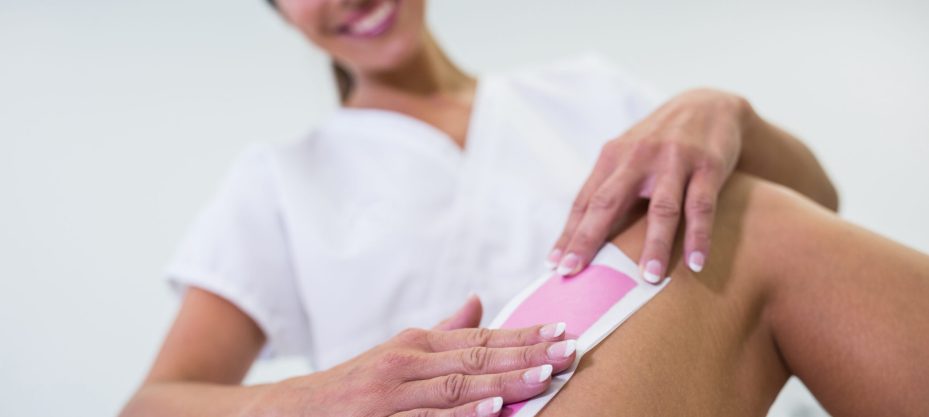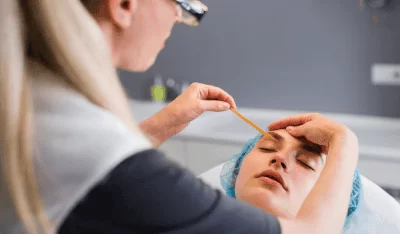To minimize the discomfort during waxing, did you know that the time of the month can affect your pain tolerance? Understanding this factor can significantly impact your waxing experience.
You can make the process more bearable by implementing simple techniques and adjustments.
Prepping Your Skin
To minimize pain during regular waxing, start by thoroughly exfoliating your skin. This step helps remove dead skin cells that could clog hair follicles, making the waxing process smoother and less painful. Use a gentle exfoliating scrub or mitt to slough off any buildup, focusing on the areas you plan to wax. After exfoliating, ensure your skin is dehydrated before applying any wax to avoid irritation or uneven results.
Next, warmly shower before waxing to open up your pores and soften the hair follicles. This can help the wax adhere better to the hair, making it easier to remove and reducing discomfort. Please avoid using lotions or oils on your skin before waxing, as they can create a barrier between the wax and your hair, leading to less effective results.
Choosing the Right Wax
Start by considering the wax that best suits your skin type and hair texture when choosing the wax for your waxing session. Different types of wax are available, such as soft wax and hard wax. Soft wax suits larger areas like legs and arms, while hard wax is better for sensitive areas like the face, underarms, and bikini lines.
For sensitive skin, look for waxes with soothing ingredients like chamomile or aloe vera to minimize irritation. A wax formulated for vital hair removal is recommended for coarse hair to ensure effective results. On the other hand, if you have fine hair, a gentle wax that can grip even the tiniest hair is ideal.
Managing Pain During Waxing
Consider incorporating a numbing cream to reduce discomfort during your waxing session. Numbing creams contain ingredients like lidocaine that help dull the sensation of pain. Apply the cream to the area at least 30 minutes before your appointment for the best results. This can significantly decrease the pain intensity felt during the waxing process.
Another way to manage pain during waxing is by taking an over-the-counter pain reliever, such as ibuprofen, before your appointment. This can help reduce inflammation and make the experience more bearable. Just make sure to follow the recommended dosage on the packaging.
Aftercare Tips
If you’ve just had a waxing session, ensuring proper aftercare is essential for maintaining smooth and healthy skin. Add aloe vera gel or a calming lotion to the waxed area to soothe any redness or irritation. This will help reduce inflammation and hydrate the skin.
Avoid hot baths, saunas, or sun exposure immediately after waxing, as your skin will be sensitive. Opt for loose-fitting clothing to prevent friction and irritation. Exfoliating the waxed area 48 hours after your session can help prevent ingrown hairs. Use a gentle scrub to remove dead skin cells and smooth the area.
Professional Waxing Advice
For expert waxing advice, consult a licensed esthetician or professional waxing technician. These professionals have the training and experience to provide you with personalized recommendations and techniques tailored to your skin type and hair removal needs. They can assess your skin’s condition, recommend the best type of wax for you, and ensure that the waxing process is done correctly to minimize discomfort.
Professional waxing technicians can also offer guidance on preparing your skin before waxing, such as exfoliating and moisturizing properly. They may recommend avoiding certain skincare products or medications that could make your skin more sensitive during waxing. Additionally, they can advise you on post-waxing care to prevent ingrown hairs and irritation, including using soothing products and avoiding activities that could irritate your skin.



